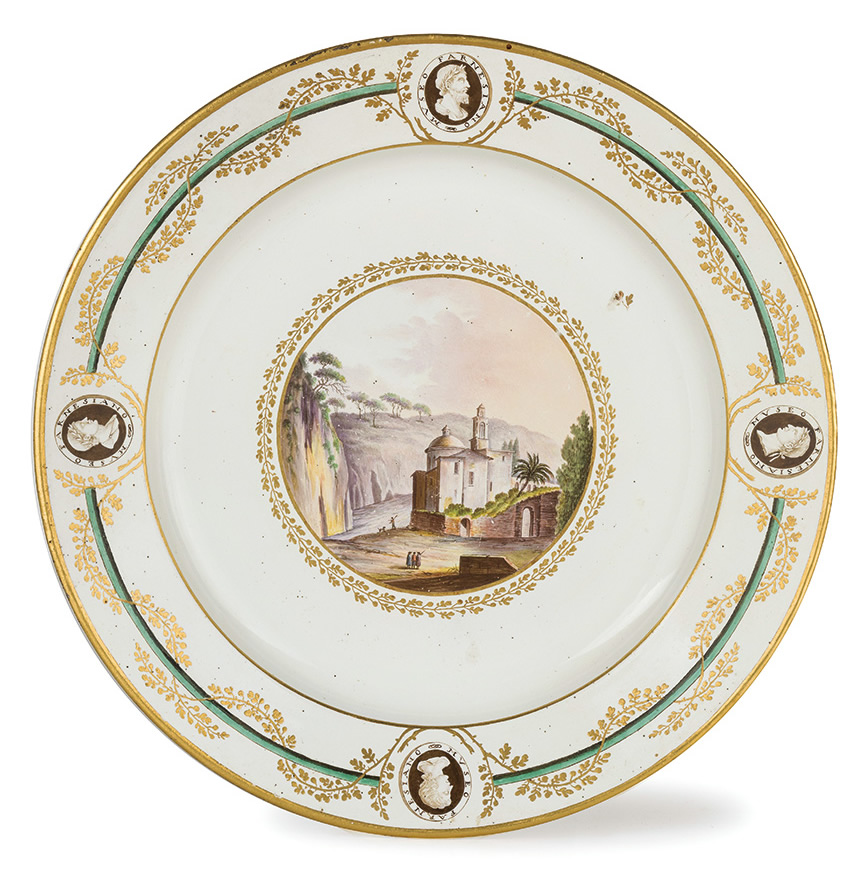by Luca Melegati
The catalogue of the sale of ceramics and glassware next November 26th, which will be held in our Genoese halls, presents an interesting selection of ceramics between the 18th and 20th century: majolica, porcelain and pottery both Italian and European. The porcelain offer includes three plates belonging to one of the great (and famous) sets commissioned by the court of Naples to the Manifattura Reale Ferdinandea. Decorated with views of the most beautiful Neapolitan landscapes (and of other cities in the Kingdom) and called Farnesiano for the frieze with cameo medallions and the inscription Museo Farnesiano, this ensemble stands out for the great attention paid to the elaboration of the shapes and for the quality of the views. The sources used are various, from the Voyage Pittoresque by the Abbot of Saint Non, 1781-1786, to the Phlegraei Fields by Sir William Hamilton (1776), up to the various collections of engravings that have been widespread since 1750 and that illustrated a vast choice of archaeological or monumental views. Created from 1784 onwards, the set was carefully studied in 1986, on the occasion of the exhibition dedicated to the porcelain of the Bourbon family of Naples. We remember the beautiful teapot in Meissen porcelain decorated with grotesque figures in battle and datable to the mid-eighteenth century and the small sample of late eighteenth-century Vinovo pottery. But perhaps the most interesting set includes the eclectic production in the mid-nineteenth century, especially ceramics made in the furnaces of the Parisian Samson who, in the middle of the nineteenth century, flooded the salons of good society throughout Europe with his sophisticated copies of porcelain between West and East. Actually, for a long time the frontispiece of the correspondence of the maison on rue Beranger focused on the Samson’s bronze work (and often their ceramics have beautiful frames): but it is certainly the ceramics that have given the history of nineteenth-century decorative arts the names of Edme (1810-1891) and his son Emile (1837-1913). The company produced enamels (often of great taste), terracotta and majolica up to Sèvres (in biscuit or polychrome porcelain), Meissen and Renaissance productions. It was copying, often very well, the oriental productions that the Samsons give their best, with a production of great quality that continues to attract collectors and enthusiasts. Of these porcelains, the November catalogue offers a small but emblematic selection: they are flat, even of beautiful dimensions, with Green or Pink Family decorations, figures (a speciality of the award-winning company, but today not easy to find on the market) and above all vases, perhaps the most appreciated Samson production for its remarkable decorative impact.

Tre piatti in porcellana policroma decorati con vedute del Regno e bordo a cammei con scritta “Museo Farnesiano”
Manifattura di Napoli, circa 1784-1788
Stima per ciascuno € 3.500 – 4.000

